Does Hair Color Damage Your Hair?
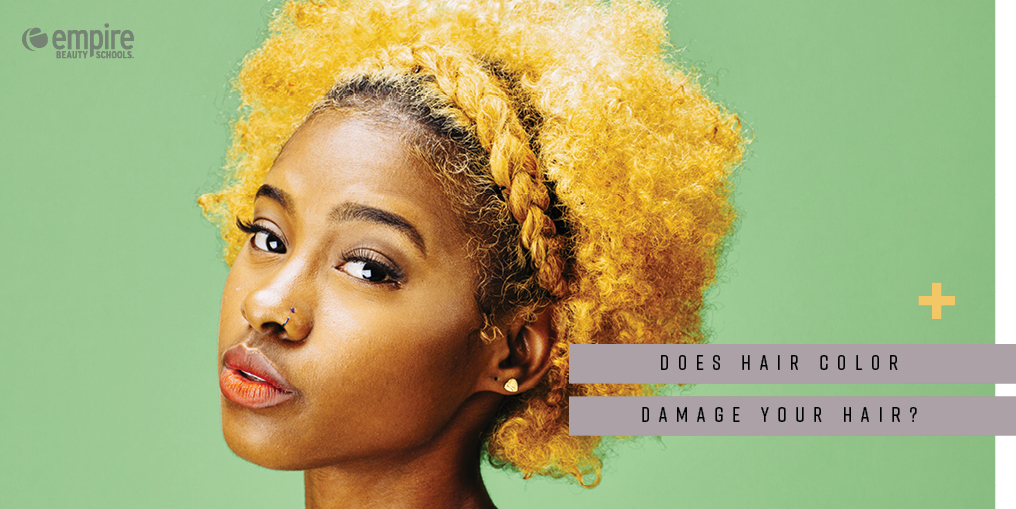
If you have ever had your hair colored or done a DIY color job, you know how wonderful it feels to have a brand new vibrant hair color. It can truly transform your attitude and make you feel really great about yourself. And we all deserve to have that self-confidence. But does hair color cause damage to your hair or to your overall health?
Yes. Unfortunately, hair Color damages your hair. When you dye your hair it lifts the cuticle, altering the hair in a way that will never completely revert back to it’s natural virgin state. However, the hair that grows from your scalp will grow out normally so only the hair that has been dyed is affected.
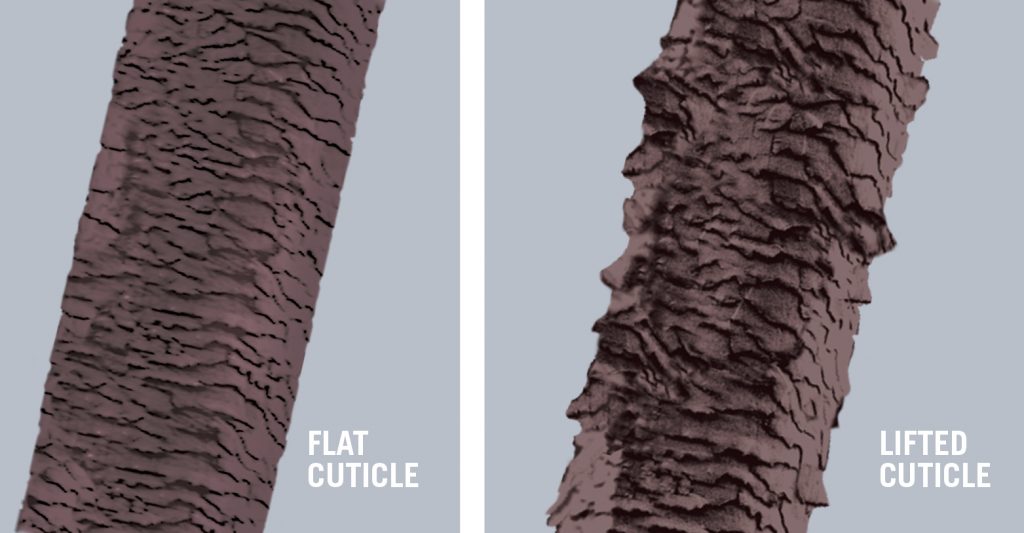
But remember the benefits of this damage are that you have a beautiful new hair color and your hair may also be a little fuller and voluminous. However, your hair may need to be trimmed or cut a bit sooner.
Like many things in life, the real damage comes over time when you dye your hair repeatedly. The big damage from hair color is cumulative (as in the number of hair colors/processes performed and the age of the hair, heat styling, etc). In other words, progressive coloring for many years may cause serious damage to your hair if you do not take action to address the damage it has incurred from years of heat, coloring, UV rays, etc.
So How Does Color Damage Your Hair?

To really understand the hair coloring process and what causes the damage, we must take a look at each type of hair color and how they work exactly.
Permanent Hair Color:
If you are using a permanent hair dye, the outer layer of the hair shaft (the cuticle) must be opened before permanent color can be deposited into the hair. With the cuticle open, the dye reacts with the inner portion of the hair (the cortex) to deposit or remove the color.
Most permanent hair coloring products use a two-step process. First removing the original color of the hair and then depositing a new color. This is the same process used when lightening the hair except a new colorant does not have to be bonded to the hair shaft after bleaching.
Ammonia is the alkaline chemical that opens the cuticle. This allows the hair color to penetrate the cortex of the hair. Ammonia also acts as a catalyst when the permanent hair color comes together with the peroxide. Peroxide is used as the developer or oxidizing agent. The developer removes pre-existing colors. Then peroxide breaks chemical bonds in the hair, releasing sulfur. This is what causes the characteristic odor of hair coloring products.
After the melanin (color in your hair) is removed, the new permanent color is added to the hair cortex. There are also various types of alcohols and conditioners may also be present in hair coloring products. Conditioners are used to close the cuticle after dyeing to seal in and protect the new color.
Temporary Hair Color:
Temporary or semi-permanent hair colors deposit acidic dyes onto the outside of the hair shaft. Also, small pigment molecules slip inside the hair shaft, using a small amount of peroxide or none at all.
In some cases, several colorant molecules enter the hair to form a larger complex inside the hair shaft. Shampooing removes temporary hair color as you wash your hair or expose it to water. Temporary or semi-permanent products don’t contain ammonia. This means the hair shaft isn’t opened up during processing and the hair’s natural color remains once the dye washes out.
Lightening Your Hair:
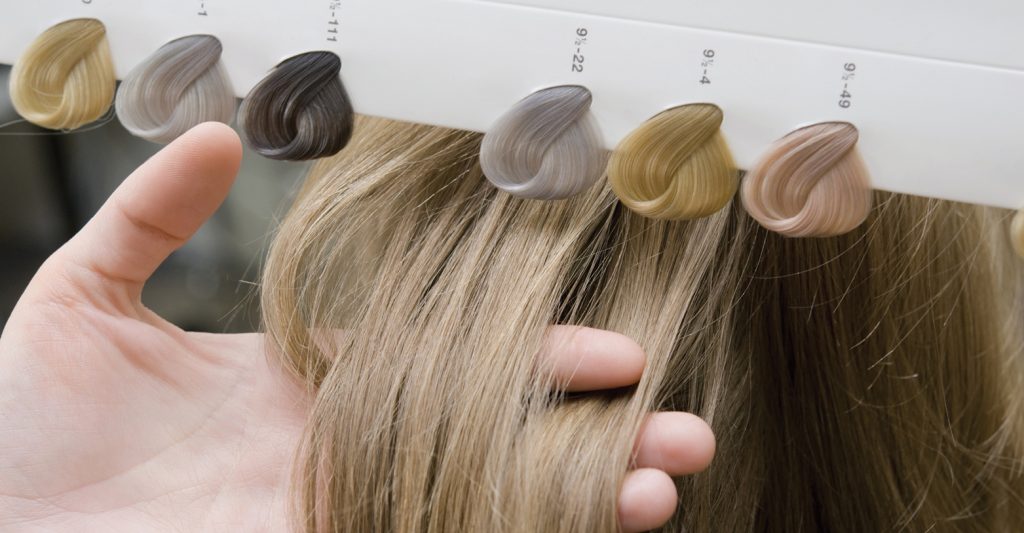
Bleach is used to lighten your hair. The bleach reacts with the melanin in the hair, removing the color through an irrevocable chemical reaction. The peroxide used for the bleaching process is extremely drying to hair and is the reason why colored hair can take on a straw-like texture. The bleaching process oxidizes the color molecules. The melanin is still present, but the oxidized molecules are colorless.
However, bleached hair tends to have a pale yellow tint. The yellow color is caused by the natural color of keratin, a structural protein in hair. Also, bleach reacts more with the dark eumelanin pigment than with the phaeomelanin pigments within the hair. So some gold or red residual color may remain in your hair after lightening. Hydrogen peroxide is one of the most common lightening agents. The peroxide uses an alkaline solution, which opens the hair shaft to allow the peroxide to react with the melanin.
So now that you know all about the hair coloring process, what can you do to repair the damage it causes?
Tips to Help You Repair the Damage from Coloring Your Hair
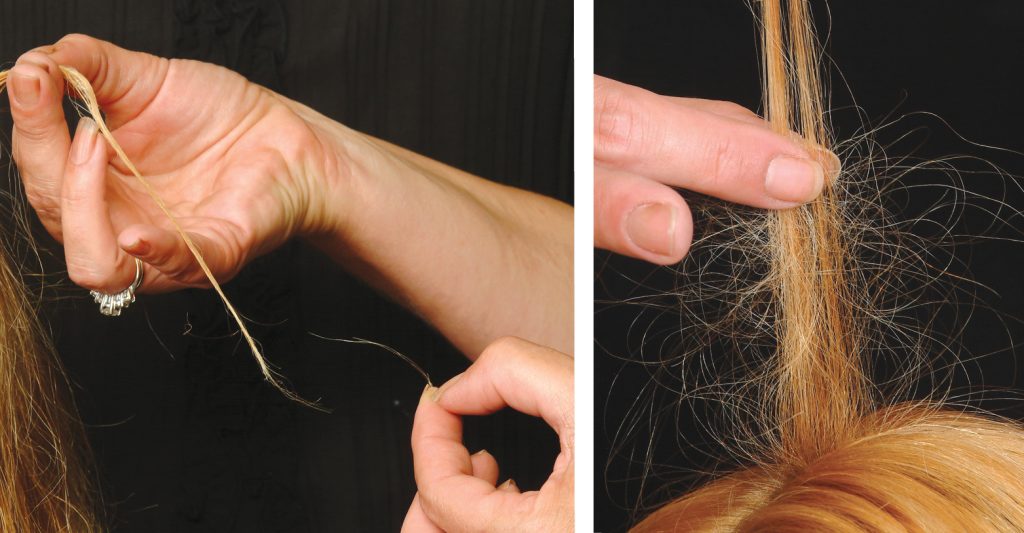
Over time with repeated coloring sessions, the structure of your hair changes. It will become weaker and more prone to breakage. The more damage your hair incurs, the less color it will hold. That’s why it’s so important to prioritize repair if you color your hair.
Here are some tips to help you reverse the damage that coloring causes to your hair:
1. Lower the heat settings on your styling tools.
Heat can cause excessive damage to your hair. Using your curling or straightening iron and a blow dryer daily can dry your hair out and cause it to be brittle. So it is important to watch the heat settings on the tools you use. Turning down the heat just a few degrees will make a difference in the damage these tools can do.
2. Use hair masks and deep conditioning treatments
These treatments can restore moisture to your hair. This helps with the straw feeling your hair gets when it is overprocessed and dried out. Your stylist can suggest and apply a treatment. But you don’t have to visit a salon to get one. Your local drug store probably carries many different types of hair masks and deep conditioning products.
3. Trim your split ends
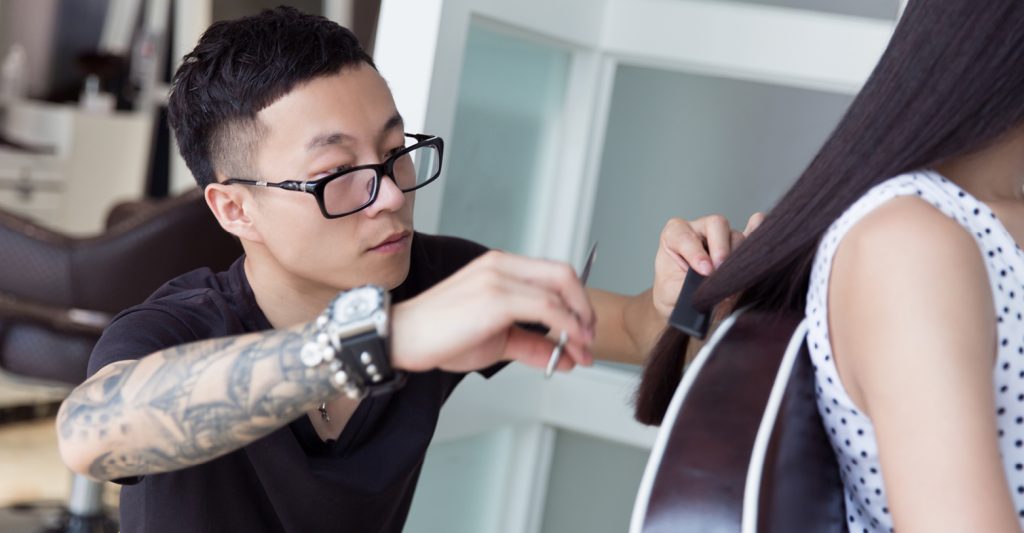
When the ends of your hair begin to split, the hair will begin unraveling from the bottom up, leading to a dull, broken, frizzy mess. The easiest thing to do when you notice the ends of your hair splitting, is to visit a salon for a trim. This will leave your hair in much better shape and it will look much healthier. Regular trims to your hair can also help your hair growth.
4. Use the correct shampoos and conditioners & use them less often.
Using a sulfate-free shampoo for color treated hair & formulated for damaged hair can help to decrease some of the damage from coloring your hair. Sticking with shampoos that contain natural origin ingredients will also help repair your damaged hair.
You should also try to avoid frequent shampooing. You can try using a dry shampoo on the second or third day after washing to help restore some of your hairs’ natural oils. In addition, washing your hair with lukewarm or cool water, and then finishing the shampoo process with a shot of cool water can reduce the damage that hot water causes. Hot water opens up the hair cuticle, but cool or cold water can help damaged hair by closing up the hair cuticle. This causes the hair shaft to lie flat, resulting in shinier, smoother hair.
Conclusion
So the answer to our question is yes, dyeing your hair causes unavoidable damage. However, when you know how the hair color processes and the damage that can be incurred, you can arm yourself with the knowledge and products it takes to repair the deterioration caused by coloring.
Learn more about what color does to your hair on our 8 commonly asked questions about coloring your hair post.